What Is Samba?
In Europe, the term “samba” is often used to describe generic group drumming. Specifically, however, “samba” is actually the name of a type of rhythm and associated songs that originate from the south of Brazil, mainly Rio de Janeiro and São Paulo.
Samba, with its captivating and infectious sounds, offers a vibrant tapestry of rhythmic brilliance that appeals to both the untrained ear and the seasoned music lover. At its core, the backbone of Samba lies in the rhythmic ensemble known as the batucada. Picture a symphony of percussive instruments blending together harmoniously to create an intoxicating rhythm that permeates the air. From the deep resonance of the surdos (bass drums) and the earthy pulse of the tamborims, to the crisp, shimmering notes of the agogô bells and the lively chatter of the cuicas, Samba encompasses a broad spectrum of tonalities.
The interplay of these diverse sounds gives Samba its dynamic and rich texture. The bass drums provide a solid foundation, their deep, resonant thumps anchoring the music, while the tamborims add a lively treble element, punctuating the rhythm with crisp, high-pitched beats. The agogô bells dance atop the rhythmic landscape, their metallic timbre cutting through with a joyful brightness. And amidst it all, the playful and distinctive sounds of the cuicas create a counterpoint, their unique friction-based tones adding a touch of whimsy to the music.
Together, these diverse elements create a rhythmic tapestry that invites listeners to tap their feet, sway their hips, and surrender to the pulse of Samba. It’s a music that bridges cultures, uniting people from all walks of life in a celebration of movement and joy. So, allow yourself to be swept away by the vibrant sounds of Samba, where the interplay of bass and treble, the blend of different rhythms, and the sheer energy of the music come together to create an experience that is both mesmerizing and truly unforgettable.
Want to Know More?..
Delving into the realm of Samba drumming unveils a world of captivating rhythmic intricacies and unique musical characteristics that set it apart from other genres. What distinguishes Samba drumming is its polyrhythmic nature, where multiple rhythms coexist and intertwine, creating a vibrant fabric of percussive brilliance.
At the heart of Samba drumming lies the batucada, a percussion ensemble comprised of various instruments, each playing a distinct role in shaping the overall sound. The combination of instruments such as surdos, tamborims, agogô bells, and cuicas gives Samba its distinctive timbral palette. The interplay of these diverse sounds, with their varying pitches and textures, creates a multi-layered sonic landscape that is both mesmerizing and exhilarating.
Unlike many Western musical traditions, Samba drumming often relies on oral transmission and improvisation, allowing for a fluid and spontaneous interaction between musicians. This dynamic approach encourages a sense of freedom and creativity, where individual expression and personal flair blend harmoniously within the collective rhythm. The syncopated beats, intricate patterns, distinctive swing fell, and interlocking rhythms showcase the mastery of Samba drumming, inviting the experienced musician to explore new rhythmic territories and expand their musical horizons.
Exploring Samba drumming may also reveal the cultural essence and historical significance embedded within the music. Originating from the vibrant streets of Brazil, Samba drumming reflects the spirit of community, celebration, and cultural expression. Immersed in this rich musical tradition, the experienced musician will encounter a new perspective on rhythmic complexity, groove, and the power of collective musical energy.
Engaging with Samba drumming offers a chance to embrace a rhythmic language that is distinct, spirited, and evocative. It presents an opportunity to broaden one’s musical vocabulary, delve into complex polyrhythms, and immerse oneself in the vibrant cultural heritage of Brazil. For the experienced musician, Samba drumming provides an exciting and invigorating journey, offering fresh perspectives and new sonic possibilities that enrich their musical repertoire.
The Instruments
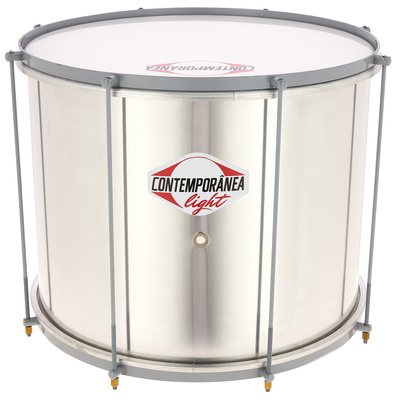
Surdo
Surdos (pronounced “Surdoo”)are the powerful heartbeat of the Samba bateria, commanding attention with their deep, resonant tones. These large bass drums, traditionally played with mallets, produce a thunderous sound that reverberates through the air, filling the space with an undeniable presence. The surdos hold the responsibility of providing a solid foundation for the entire ensemble, anchoring the rhythm and driving the groove forward. Their repetitive, booming patterns serve as a musical compass, guiding the bateria and setting the tempo. Played in unison, the surdos create a mesmerizing wall of sound that pulses with energy, adding a powerful and primal element to the Samba experience.
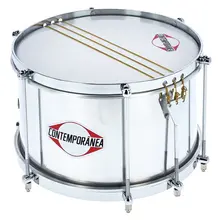
Caixa
Caixas (pronounced “Kasha” or “Kaisha”), similar to snare drums, are a crucial component of a Samba bateria, infusing the ensemble with their distinctive sound and driving the rhythmic pulse forward. These cylindrical drums, played with sticks, possess a sharp, crisp tone that cuts through the ensemble’s texture with precision. The caixas serve as the rhythmic backbone, providing a steady, 16th note, syncopated beat that guides the bateria and adds a distinct layer of complexity to the overall sound. Caixas create a compelling counterpoint to the thunderous surdos and colorful tambourims, creating a dynamic interplay of rhythm and enhancing the overall groove. The skilled caixa players execute intricate patterns and lively rolls, adding embellishments and accents that elevate the energy and drive of the music, making the caixas an essential and captivating element of the Samba bateria
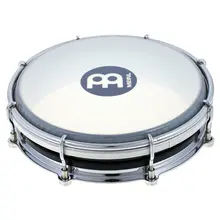
Tamborim
The tamborim, a small frame drum with a single head, is an essential instrument in the vibrant world of Samba percussion. Its lively and crisp sound cuts through the rhythmic tapestry, infusing the music with a captivating sparkle. Played with a specialized stick or mallet, known as a “baqueta,” the tamborim produces sharp and rapid beats that add an energetic flair to the music. Its role in the bateria, the Samba percussion ensemble, is vital, as it acts as a driving force, providing accents and intricate rhythmic patterns that interlock with other instruments. With its distinct timbre and agile playing technique, the tamborim brings a sense of urgency and excitement, elevating the overall groove and adding a touch of brilliance to the pulsating rhythms of Samba.
It’s worth noting that the word “tamborim”, when pronounced in Brazilian Portuguese sounds more like the English “tambourine” – an instrument to which the Brazilian tamborim bears only a superficial likeness to.
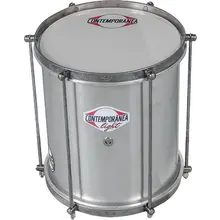
Repique
Repiques or Repeniques (pronounced “Hep-ee-key” or “Hep-pen-ee-key”) are an integral part of the Samba bateria, playing a vital role in adding a dynamic and distinctive sound to the ensemble. These high-pitched drums, typically played with a stick and a hand, produce sharp and piercing tones that cut through the rhythmic tapestry. The repiques serve as a melodic voice within the bateria, responding to the calls of other instruments and injecting syncopated phrases with their quick and agile playing style. With their rapid-fire rhythms and intricate patterns, repiques create a mesmerizing counterpoint to the surdos and other percussion instruments, adding an element of excitement and driving the energy of the Samba forward. Their unique timbre and versatile playing technique make repiques an essential component, ensuring that the bateria pulsates with the infectious spirit and dynamic complexity that defines Samba.
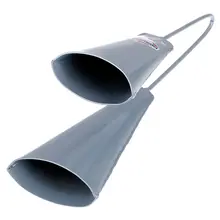
Agogô
Agogos, the shining stars of the percussion world, are a pair of metal bells that add a distinctive and mesmerizing sound to the Samba bateria. When struck, they emit a vibrant, piercing tone that cuts through the ensemble’s layers of rhythm. The agogos consist of two bells, one larger and one smaller, attached to a handle. They are played by striking them with a wooden stick or mallet, creating a crisp and resonant sound that dances in the air. In the bateria, the agogos serve as a melodic guide, helping to accentuate and highlight specific rhythms within the intricate Samba patterns. Their clear and penetrating sound acts as a beacon, cutting through the percussive texture and allowing other musicians to navigate the complex rhythmic landscape. With their sharp and distinctive voice, the agogos add a touch of brilliance and precision to the rhythmic tapestry, ensuring that the Samba pulse remains strong and irresistible.
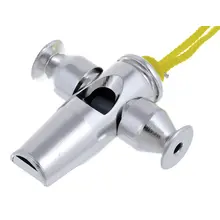
Apito
Apitos (pronounced “Ah-pee-to”) are iconic Brazilian whistles that add a distinct sonic flavor to the vibrant world of Samba. Emitting a piercing and sharp tone, apitos cut through the rhythmic tapestry with their unmistakable sound. Played by skilled percussionists within a bateria (Samba percussion ensemble), apitos serve a crucial role in guiding the collective rhythm and accentuating key moments in the music. By blowing into the whistle’s mouthpiece and manipulating the pitch using finger holes or sliding mechanisms, performers create a range of melodic and rhythmic patterns. Apitos act as a rhythmic compass, signaling transitions, highlighting accents, and providing cues for dancers, musicians, and the entire ensemble. With their piercing sound and ability to rise above the cacophony of drums, apitos bring an electrifying element to the Samba experience, ensuring that every beat is precise, cohesive, and irresistibly captivating.
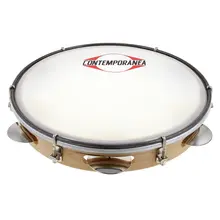
Pandeiro
Pandeiros are versatile and lively hand-held percussion instruments. Being small and played only with the hands, they tend not to be used in a large bateria. Originating from Brazil, pandeiros are circular frames adorned with metal jingles or discs around the edges. When played, they produce a vibrant and shimmering sound that cuts through the ensemble with its distinctive timbre. With a combination of hand techniques, such as slaps, thumb strokes, and finger rolls, pandeiro players create a rich tapestry of rhythms, adding layers of complexity and groove to the music.
The pandeiro is very similar to the European tambourine, however the pandeiro always has a single head, is tunable, and tends to be more robustly engineered.
